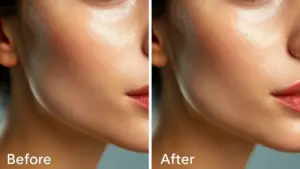Facelifts are surgical procedures designed to rejuvenate the face and address signs of aging. Different types of facelifts cater to various needs and concerns, offering customized solutions for achieving a more youthful appearance. Understanding the different types of facelifts is crucial for selecting the most appropriate procedure for individual needs. The choice of procedure depends on the extent of facial aging and the desired outcome. One common type of facelift is a mini-facelift, which targets specific areas of the face, such as the jowls or the neck. This procedure is often suitable for patients with less significant signs of aging. Another type is a full facelift, which addresses more extensive areas of the face, including the forehead, temples, cheeks, and neck. This procedure is ideal for patients with more pronounced signs of aging. The recovery period following a facelift can vary depending on the type of procedure and the individual patient. Patients can expect some swelling, bruising, and discomfort in the days following the surgery. Proper post-operative care, including medication and follow-up appointments, is essential for a smooth recovery. The results of a facelift are typically long-lasting, providing a more youthful and refreshed appearance.
Post-Operative Care for Rhinoplasty
Learn about the essential post-operative care steps to ensure a successful rhinoplasty recovery.



